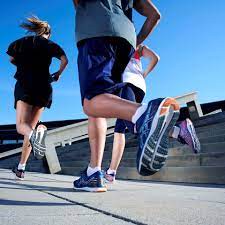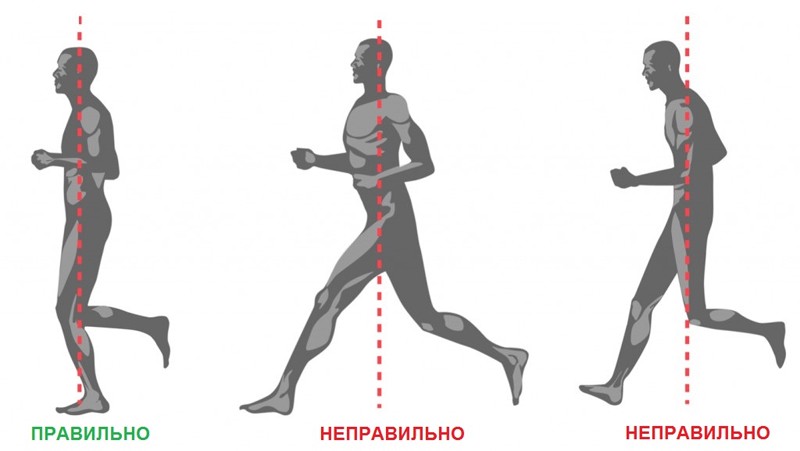At one time to admire I started running because of one of its features: it is the easiest and most accessible sport. And most importantly, everyone can do it, regardless of gender, age and type of activity. It does not require special equipment - a T-shirt, shorts and sneakers are enough. You can run anywhere - from specially equipped trails to parks and city sidewalks.

In order for running to be effective and, most importantly, safe, as in any sport, it is necessary to follow certain rules - then moving forward will bring pleasure. But if you are just starting to run, you will not immediately notice the correct technique and efficiency of running. Of course, it is better to learn from other people's mistakes, because repeating them can lead to injuries, deterioration of well-being or lack of desired progress. All this "kills" motivation, and most often beginners want to quit running rather than figure out what exactly went wrong. Therefore, in this article I decided to compile a list of the most common mistakes that beginners make when running.
Inappropriate running shoes
Before you start running, you need to pay attention to your running shoes and choose the right running shoes - 30% success in training. Because then the leg receives support for the necessary areas of the foot and ankle, and stabilization reduces the impact of the foot on the surface. All this together allows you to develop higher speed, run longer, cover long distances.

However, beginners often think that they need to learn how to run properly first, and only then get themselves a good pair of running shoes, and on the background of this, they encounter improper muscle tone, injure their knees and feet, and stretch their tendons.
HOW TO AVOID MISTAKES?
Invest in quality running shoes before you start running. Even if you don't like running, you can then use these sneakers in addition to your daily looks.
Frequent or excessively intense training
beginner runners make mistakes with intensity, mainly at the beginning of running. You went for a run and it seems that now the sea is knee-deep, now you will start running and run around the stadium for 15 laps - no less! And the first two times you may even be proud of yourself - that's how well everything turned out. Just don't be surprised if you don't want to go to training number 3 anymore, or you feel such wild fatigue or even worse - pain - then you should crawl to work, which is already a run.
Training that is too long or too hard can cause pain or injury. After that, it is easy to slip into indifference to further training and disappointment in yourself and your abilities.
HOW TO AVOID MISTAKES?
If you're just starting to run or returning to training after a long break, set minimal, achievable goals and don't run too long or long distances. Increase the load gradually and regularly.
A rapid increase in running distance
Many novice runners are so excited and enthusiastic about their new hobby that they rapidly increase the distance they run. They start signing up for lots of races, avoiding rest and recovery days.
The result is common running injuries such as pain along the inner leg and knee injuries. In some cases, athletes experience moral burnout and generally lose interest in running.
HOW TO AVOID MISTAKES?
Increase your running distance gradually, no more than 10% per week. If you are a beginner or have had a long break since your last run, start with walking first and then switch to jogging and walking. Pay attention to pain and discomfort. If it gets worse while running, this is a warning sign to stop.
Incorrect running technique
Incorrect running technique threatens not only pain in the feet, ankles and lower legs - it is also dangerous for injuries, reduces running speed and training efficiency. And the worst thing is to learn the wrong technique, because then you will have to relearn, rework yourself, your habits.

Common problems of improper technique among novice runners are usually throwing the heel away from the center of gravity, running in a hunched position, lack of arm movement. These mistakes lead to the fact that the muscles are overloaded, and the mutilated technique, as if for evil, quickly turns into a habit.
HOW TO AVOID MISTAKES?
During training, try to maintain the correct posture, body straight, eyes forward, hands – naturally bent at an angle of 90 degrees, move in the rhythm of jogging, legs do not need to be thrown forward. If you watch your technique while jogging, your muscles will not overwork, and excellent results will not make you wait a long time.
There are no pauses in training mode
Running daily without much rest is a pretty bad idea. Because tense muscles are most prone to damage and, accordingly, injuries. Since any physical activity assumes that you will give your muscles time for regeneration (restoration). It is at these moments that microtears in the muscles heal, the muscles become stronger, the body rests, and you show noticeable progress in the next training session.
HOW TO AVOID MISTAKES?
Before you start running, you should come up with a training regimen and stick to it. The optimal mode can be to run a day and rest a day.
Do not underestimate the pain
Pain is a body signal that requires a quick solution. This is your beacon that it's time to take a break and rest. If you ignore it, the pain will not go away. In the worst case, ignoring the pain, you will get serious injuries, sprains, blows, inflammation.
If you do not pay attention to the pain, then you risk falling out of training for a long time. Even the smallest injury turns into health problems if the source of pain is not treated in time.
HOW TO AVOID MISTAKES?
Listen to your body! Training at any cost is a disservice to yourself. Respond to your feelings in time, and pretty quickly you will set records, if not world records, then certainly your own, personal ones.
Unbalanced diet
A balanced and adjusted diet is what really helps to make the body stronger, get rid of extra pounds and build muscle mass. But for some reason, beginners ignore recommendations for proper nutrition and often avoid many healthy foods or cut back on food in an attempt to lose weight. As a result, the body does not receive important trace elements, spending a lot of energy. A few days in such a merciless regime lead to a sharp decline in strength.
And vice versa. A properly selected diet helps the body recover quickly after training. It's all about carefully selected products, the number of meals and portion sizes.
HOW TO AVOID MISTAKES?
Your daily diet should be complete and carefully calculated. It should contain enough cereals, fish, meat, vegetables and fruits. When the daily menu includes a sufficient amount of proteins, fats and carbohydrates for your body, you will have energy, strength, and you will not give up after the first week of jogging.
High tempo
The desire to take a sharp start, overtake everyone and make the impression of a professional runner is very tempting. And this is understandable, especially if experienced athletes are training nearby and you want to keep a dignified presence next to them. But at such a pace, you can only run to injuries.
HOW TO AVOID MISTAKES?
Take an easy pace that allows you to keep breathing normally and calmly talk while running, or alternate between running and walking. Keep the heart rate within 120 beats per minute. Such running will be not only pleasant, but also more productive - you will recover faster after training and will not lose the joy of running.
Neglect the warm-up
Getting up straight from your desk and running a few kilometers is not a very good idea. Warming up is a very important element of running, it is not for nothing that we were taught this at school in physical education classes.
HOW TO AVOID MISTAKES?
Allow your body to wake up before jumping in. In addition, do not forget to stretch after a run - it will improve the blood circulation of the muscles and the elasticity of the ligaments.
Running on the heel
It seems to beginners that running on the heel is easier and more natural. They take wide steps and land directly on the heel. And this is a hard blow to her and her knees! Running like this, especially on hard surfaces like asphalt or concrete, increases your risk of injury many times over! This is how many runners get periosteum.
HOW TO AVOID MISTAKES?
Ask a coach for help and work on running technique under his guidance. However, it is quite possible to wean yourself from such a manner. The same applies to too wide steps and the wrong position of the hands, when amateur runners swing them too much from side to side.
Lack of maintenance of water balance
Many runners underestimate how much fluid they lose while running. As a result, they suffer from dehydration, which negatively affects performance and health.
HOW TO AVOID MISTAKES?
An hour before the start of the run, try to drink 470-700 ml of water or other liquid that does not contain caffeine. If you feel thirsty while running, this is a signal to replenish your water balance. If your training lasts an hour, then consume 120-170 ml every 20 minutes of running. If the run will last more than 90 minutes, then water should be replaced with special sports drinks, which will help restore the supply of sodium and other minerals (electrolytes).
Improper breathing
Some runners are unsure of how they should breathe while running. They begin to breathe too shallowly, which can lead to pain in the sides.
HOW TO AVOID MISTAKES?
If you are a beginner, try to run at a pace that allows you to breathe easily. Use the "conversation test". If you can speak in complete sentences while running without getting out of breath, it's the right pace.
Neglect of general physical training
Among running enthusiasts, there is a common stereotype that runners need only run in order to progress, keep their bodies in shape, and keep their muscles in good shape. But this approach can lead to muscle imbalance - not all muscle groups can be strengthened and developed by running. And when the load on the weak elements of the body system reaches a critical level, it leads to premature fatigue, errors in running technique and, in particularly severe cases, to injuries.
HOW TO AVOID MISTAKES?
The stronger the muscles, the longer and faster the athlete can run. To increase the body's endurance and prevent running injuries, you should add general physical training to your training schedule. These exercises do not require a gym or special equipment - they can be performed outside or at home 2-3 times a week.
Incorrectly selected clothes
Some runners wear too much or too little clothing for the appropriate weather conditions, leaving them vulnerable to hypothermia, colds, or overheating during the warm season.
HOW TO AVOID MISTAKES?
Sportswear should be made of synthetic fabrics that wick moisture away from the body well. When dressing for a run, follow the rule that the temperature outside the window is 10-15 degrees higher than the actual temperature. At first it will be a little cool, but in just 5-10 minutes the body will warm up properly and you will feel comfortable. In the cold period, it is also important to cover the head and hands to avoid heat loss. In the heat, give preference to clothes of a loose cut and light colors, do not forget to protect your head from the sun.
Comments